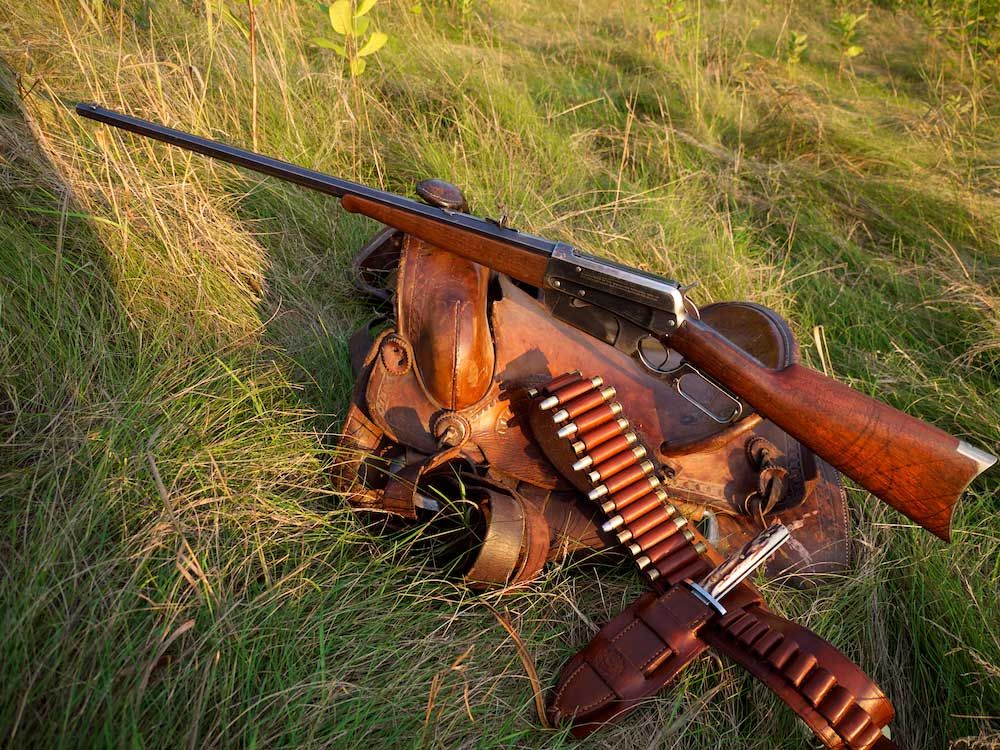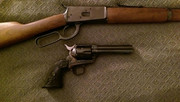
Last weekend at a local gun show, I picked up an original 38-72 cartridge shown below. For comparison, from left to right, is the 45-70, the 30-30, an original black powder WRACO 38-55, an original 38-72 cartridge with jacketed bullet, and last of all, a 30-06 cartridge.

Another fellow (Shasta) who also owns an original 38-72 graciously loaned me an original Winchester 38-72 mould that he owned. With excitement, I casted well over 300 bullets. The naked bullets, before lubing, weighed 277. 4 grains, plus or minus 0.2 grains. The diameter, using wheelweights and a wee bit of tin, was .378”. The photos below show what the bullet looks like. The long nose-to-driving band ratio has turned out to be a bit of a problem, as I learned over the past month with a lot of work on loads.


It turns out that the bullet has a tendency to wobble slightly, judging from the slightly oval holes at 100 yards that I consistently observed. I tried to speed up the bullets to see if they would stabilize better, but found that the groups really opened up if I got much above 1,430 fps. The original black powder velocity was 1,425 fps, but black powder gives a pretty high peak pressure spike which obturates the lead bullet to seal off the bore. I found that slower smokeless powders just couldn’t produce enough pressure at 1,425 fps to do the job and I couldn’t go faster without groups really opening up. In situations like this, 2400 usually comes to my rescue as it gives a very similar peak pressure to black powder, all other things being equal. After some experimentation across the chronograph in my back yard, I settled on 17.5 grains of 2400 under the 277 grain cast bullet in my once fired Jamison brass. Let’s hear it for Jamison, they actually make 38-72 brass for a reasonable price!! I think I paid around $28 for 20 cases; I ain’t complaining about that at all.
I headed to the range just 8 minutes down the road that runs past our house. Out of curiosity, I decided to fire 5 rounds with the powder forward in the case (gun was level, but I tipped each cartridge nose down as I loaded it) and 5 rounds with the powder back (I’d tip the muzzle up while loading, and then level the gun). What an education!! In the photo below you can see the results, two different average velocities and two different groups with the same load. The powder forward gave an average velocity of 1,290 fps and the high group on the target. The powder back gave an average velocity of 1,425 fps and the low group, with one hole just below the paper. Range was 100 yards. The 1,425 fps group was 2 & 9/16” for five shots at 100 yards. The 1,290 fps group was 2 & 3/8” for four shots, but I wasn’t sure where the fifth shot was. The slower velocity had more oval holes in the back board, indicating it was clearly less stable, though the fast group still had slightly oval holes. Here’s the target ....

That lower group obtained with 17.5 grains of 2400 and the powder forward for 1,425 fps is the tightest load I was able to find after a lot of loads tried over this past month. This is not surprising, as the velocity is the same as the BP velocity and the pressure was very close as well. However, I am not happy with it, as I figure if the bullets are slightly wobbling at 100 yards, they will be worse at 200 and I want good accuracy at 200 yards. Furthermore, I cannot have a load with such position sensitivity. I don’t want to have to think about powder position when I am hunting, especially when it makes a difference of seven inches vertical between back and forward! The solution, of course, is filler, but I would have to use a lot of it with 2400 and I prefer to use filler with slower powders ..... but I can’t use slower powders because the pressure is not high enough to obturate the bullet and I can’t raise the pressure by going for a higher velocity with slower powders because the groups really go south fast with this plain base bullet.
Stabilization Problem: Winchester must have had a similar problem with their cast bullet. According to Madis, the 38-72 first came out with a 1:26 twist in 1895. Around 1904 they increased it to 1:18 and then later to 1:16. As near as I can measure, the twist of my rapid taper octagon barrel is 1:26, so I’m not optimistic I can get rid of that bullet wobble at 1,425 fps. With this in mind, I have given up on this bullet; the nose is just too long for the length of the driving band portion. The fellow who loaned me the mould (Shasta) has come to the same conclusion with that bullet in his 38-72. The long, narrow 277 grain bullet just won’t completely stabilize at 1,425 fps, which just so happens to be the velocity that seems to give the greatest accuracy. I am ordering a custom gas check bullet that has a longer driving band section than nose section. It should be more stable and I should be able to push it a bit faster up to 1,475 fps, which was the later velocity of the 38-72. Incidentally, Winchester quit making the 38-72 in 1909 and production of ammunition ceased in 1936.
Establishing a benchmark for this rifle: Finally, I wanted a benchmark accuracy. What is this rifle capable of with the right bullets? I decided to load up five more of my dwindling stash of custom swaged .3775 JSP bullets weighing 246 grains. The load was 28 grains of RL-7. Average velocity was 1,605 fps, but I found that with powder forward I got only 1,536 fps. The first shot ticked the top of the paper so Iowered the rear sight one notch and fired my remaining four rounds to get a four shot group of 1 & ¾” at 100 yards. This old rifle can be a tack driver with the right bullet! I am really looking forward to trying some gas check bullets in this old rifle. Here’s a photo of the JSP bullet and the target .....




